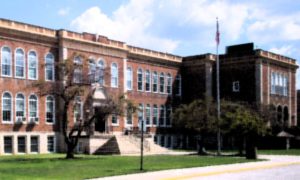Hi! I’m Margaret Carnahan, and I teach math at Hamptonville High School.
It’s been unusually cold this winter. Especially on Martin Luther King Day. Hamptonville has school that day, and every teacher is expected to have a lesson that connects with Dr. King or civil rights or social justice in some way.
Over in the 7th grade social studies classes, one of the first-year teachers was encouraging her students to plan a community service project for the school. One of the boys sitting over by the window – and feeling the draft – said, “I’d like a project to make them raise the heat in this building!”
The others chimed in. “Yeah, it’s cold in here!”

It’s true the rooms were chilly. Schools everywhere have to economize, and this year we had turned down the heat a little more, and with the Alberta Clipper, it was a double whammy. Students wore hoodies and jackets to class every day. Some of the girls had little fleece blankets they wore as fashion accessories after they learned how to make them in textiles class.
Their social studies teacher tried to reason with them. “You know,” she said, “it costs a lot of money to heat this building.” And then the bell rang, and they came to my class.
“Mrs. Carnahan, how much does it cost to heat this building?” That wasn’t my lesson plan, but it involved calculations, so we spent the period figuring the size of the building and cost of natural gas. Someone found a site online that estimated how much people save by lowing the temperature one degree. We did some reverse engineering, allowed for the difference between an average house and all of Hamptonville High School, and came up with an estimate. To increase the temperature 2 degrees for 1 day would cost $470.42.
It got quiet.
DeMarco spoke up first. “We could raise that,” he said. “The school board meets next Monday. We could raise that money and take it to them and ask them to raise the temperature. It would be our community service project.”
And just like that, the idea caught on.
One team decorated coffee cans and pickle jars to put donations in. They kept them in their lockers and collected spare change at lunchtime.
Another team got together and made T-shirts for the cause. Their slogan was 2-4-1. Two degrees for 1 day, all in glitter paint numerals, 2-4-1. Everyone wore their shirts on Friday. A couple of the teachers were even seen wearing them.
A third team got together and made fleece blankets. The glitter paint didn’t work well on the fleece, so they pinned a little tag on each blanket, explaining what the funds were for. They sold out the first day, had to go home and make some more.
Now, a few of us tried to tell the 7th graders that heating the school with a gas boiler was not like heating your home with a furnace or a heat pump. You can’t just turn the temperature up and then turn it back down.
But with all the fierce determination of their age, they carried on.
Ordinarily Mr. Seymour, our principal, would have stopped them. But he was at a principal’s conference in Orlando, and our assistant principal was home with the flu. Our office secretary, Mrs. Griffin, was holding down the fort. Truth to tell, she pretty much ran the school, anyway. But she wasn’t going to be the one to tell the students they couldn’t have more heat. She did, however, make a quiet phone call to the president of the school board.
By the end of school Monday, the students had raised $513.73.
On Monday night, they all trooped in and waited their turn at the school board meeting. They were quite a sight in their T-shirts. Some of the boys wore fleece blankets around their neck like a cape. When it was their turn, they placed their coffee cans and pickle jars on the table, and DeMarco had a few words prepared. He explained that they were cold all day at school. He explained that they had figured out how much money it would take to raise the temperature 2 degrees for 1 day. He said they had worked hard and raised this money, and could the school board please turn up the heat, just for one day.
There was much applause from the young members of the audience.
The members of school board quietly looked at each other.
Then Charlotte Ruiz, who was the president, spoke up. She thanked the students for their hard work. She hoped they had learned some things about setting goals and teamwork. She said those would be valuable skills in the future.
Then she paused, and she said, “But the boilers at school aren’t like your furnace at home. We can’t just turn them up for a day and turn them back down. It doesn’t work that way.”
DeMarco said, “But we raised all this money! We can’t give it back. What are we supposed to do with it?”
Charlotte introduced Max Campbell, who was sitting in the front row. He stood up and smiled nervously. There IS something intimidating the first time you speak to a large group of 13-year-olds. Especially DISAPPOINTED 13-year-olds.
He explained that the gas company had an Angel Fund. Money donated to the Angel Fund helped pay the gas bill for people who couldn’t afford to heat their homes. He wondered if the students would like to donate to it, and he mentioned that it would be a service to the community.
It took a moment, but slowly the students nodded their heads. One of the school board members asked if there were any fleece blankets left. There were a few. She said she would buy them. She would donate them to the Angel Fund, and the gas company could hand them out to the Angel Fund people.
The students left the meeting not entirely happy, but satisfied.
Sometimes you work really hard, and you still don’t get what you want, and that’s a hard lesson to learn. But it’s good when you can also learn that sometimes you succeed in ways you never expected.

Excellent story – I really *felt it*, you know?